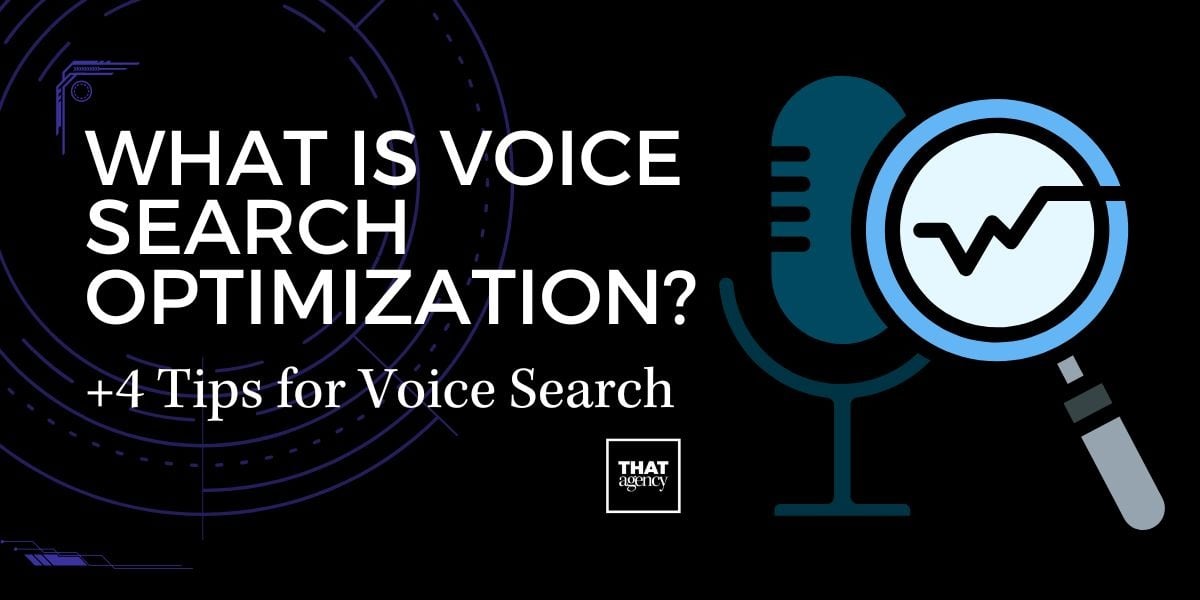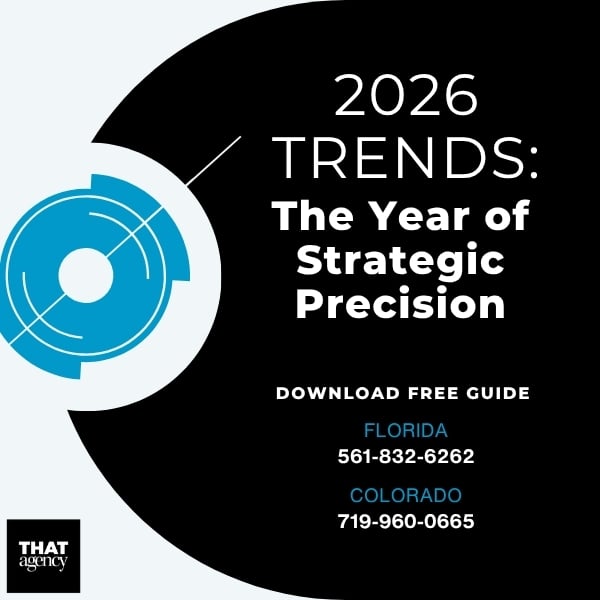If you’ve built your website using WordPress and you’re wondering how to get more people to visit it, then learning about WordPress SEO is a must. SEO stands for Search Engine Optimization, and it’s all about helping your website show up when people search for things on Google and other search engines.
You might already have great content, amazing products, or helpful services, but here’s the truth: if search engines can’t see your site or don’t understand what it’s about, they won’t show it in search results. And if your website doesn’t appear on that first page of Google, most people won’t find you at all. That means fewer clicks, fewer leads, and missed sales opportunities.
So how do you fix that? That’s where WordPress SEO comes in. When done right, it can help:
Whether you're running a local business, managing an e-commerce store, launching a new startup, or leading a large company, the SEO tips in this guide will help your WordPress website get the attention it deserves. You don’t need to be a tech expert, just follow the steps, take your time, and keep learning.
In this guide, we’ll walk you through simple, real-world tips that actually work to improve your rankings. We’ll answer questions like:
Let’s get started with the basics, and by the end of this guide, you’ll feel more confident about what it takes to make your WordPress website show up, stand out, and succeed online.
WordPress is one of the most popular platforms in the world for building websites, and for good reason. It’s easy to use, flexible enough to fit almost any type of business, and packed with features that help you create a site that looks great. But here’s the thing: just having a WordPress website doesn’t mean people will automatically find it online.
Think of your website like a brand-new store. It might be beautifully designed and filled with amazing products or services, but if no one knows where it is, or how to find it, you won’t get much traffic. That’s where WordPress SEO comes in.
Search Engine Optimization (SEO) is what helps your site show up when someone types a question or phrase into Google, like “best dentist near me” or “how to install a smart thermostat.” Without SEO, even a well-built WordPress site can end up hidden on page two or three of the search results, and most people never scroll that far.
So why does SEO matter so much for your WordPress site?
Bottom line? If you want your WordPress website to work for your business, not just look nice, you need a strong SEO strategy. Without it, your site might stay invisible, no matter how much effort you’ve put into it.
With the right WordPress SEO tips and tools, you can get noticed by the people who are already searching for what you offer. And that’s when the real results start to show.
Before you dive into writing blog posts or designing fancy pages, it’s important to make sure your WordPress site has a solid foundation. Think of this like building a house, if the base isn’t stable, nothing else will work the way it should. These setup steps may seem simple, but they have a big impact on how your site performs in search engines.
Here’s what to do first:
Choose a reliable hosting provider: Your hosting company affects how fast your website loads and how often it’s available online. A slow or unreliable site not only frustrates visitors, it also hurts your search rankings. Look for a host that offers fast servers, solid security, and good customer support. Bonus points if they specialize in WordPress hosting.
Use an SEO-friendly theme: Not all WordPress themes are created equal. Some look great but come with messy code or too many features that slow your site down. Choose a lightweight, responsive theme that loads quickly and works well on mobile devices. Clean code and simple layouts help search engines crawl and understand your site better.
Install an SEO plugin: SEO plugins make it easier to optimize your content and settings. Two of the most popular options are Yoast SEO and Rank Math. These tools let you:
They also give helpful tips as you create posts or pages, so you can improve your SEO in real-time.
Also, don’t forget to:
Getting these basics right sets you up for long-term SEO success. Even though they don’t take much time to set up, they make a huge difference in how easily your site can be found, and ranked, by search engines like Google.
Once your WordPress site is set up correctly, the next step is to improve what's actually on each page. That’s where on-page SEO comes in. On-page SEO refers to the changes you make directly on your website’s pages to help them rank higher in search engines like Google.
Think of it this way: search engines read your pages like a book. On-page SEO makes it easier for them to understand what each page is about, and whether it’s helpful enough to show to users searching for related topics.
Here are some simple but effective tips to improve your on-page SEO:
Use your main keyword in important places
Your main keyword (like WordPress SEO) should appear naturally in a few key spots:
This tells search engines, and readers, what your content is about right away.
Use headers to organize your content: Break up your text using headings like H2 and H3 tags. These make your content easier to read and help search engines figure out the structure of your page. Think of headings like chapter titles, they guide people through your content.
Example:
Write in short, clear paragraphs: Long blocks of text can feel overwhelming. Stick to 2–4 sentence paragraphs to keep things readable. Use bullet points and numbered lists where it makes sense. The easier it is to read, the more likely people will stay on your page, which is a good signal to search engines.
Add alt text to your images: Alt text is a short description of an image that helps screen readers and search engines understand what the image is showing. It’s also useful if the image doesn’t load for some reason. For example, instead of leaving an image blank, you could write: alt="WordPress dashboard with SEO plugin open".
Link to other helpful pages on your site:This is called internal linking. When you link from one page or blog post to another, it helps visitors find more information and keeps them on your site longer. It also helps search engines crawl your website more easily.
Let’s say you have a blog post about keyword research, link to it when you mention keywords in another post. Just make sure the links are relevant and helpful.
If you want your WordPress website to rank well on Google, writing helpful content is one of the most important things you can do. This type of content is what WordPress SEO is really all about, making sure your site shows up when people search for answers, services, or solutions.
Search engines are smart, but they still rely on content to understand what your website is about. That means every blog post or page you publish is a chance to help your audience and improve your visibility at the same time.
Here’s how to create content that performs well in search and keeps visitors on your site.
Focus on one main topic per post
Every blog post or service page should be focused around a single idea. For example, if your post is about “how to improve WordPress SEO,” stay focused on that. Don’t try to squeeze in unrelated topics like email marketing or social media strategy. Keeping your content focused helps search engines, and your readers, understand the message clearly.
Use examples, tips, or statistics to add value
Good content gives more than surface-level advice. It explains things in a way that’s useful, and one of the best ways to do that is by including examples. Whether you're sharing real results, step-by-step instructions, or industry stats, this kind of detail makes your content more trustworthy and interesting.
Write in a friendly, clear tone
You don’t need to sound overly technical to build credibility. In fact, most people prefer simple, clear writing that feels like a real conversation. Keep your sentences short, your paragraphs clean, and your tone helpful. That way, more people will read to the end, and they’re more likely to trust your business in the process.
Add visuals when they support the message
Text is important, but visuals can help explain complex ideas faster. Adding screenshots, charts, or diagrams can make your content easier to follow, especially if you're explaining how to use a plugin, adjust settings in WordPress, or compare tools.
Need Content Ideas? Start With Blog Post Ideas
If you’re not sure what to write about, you’re not alone. One of the biggest challenges for businesses is figuring out what content their audience wants to read. That’s why it’s smart to build a list of go-to blog post ideas that are both useful and SEO-friendly.
Here are a few strong blog post ideas that can help improve your WordPress SEO:
“How to Set Up SEO in WordPress: A Step-by-Step Guide”
“Top SEO Plugins for WordPress and How to Use Them”
“Why Meta Descriptions Still Matter in 2025”
“WordPress SEO Mistakes That Are Hurting Your Rankings”
“Checklist: How to Optimize a Blog Post Before Publishing”
These types of posts work well because they directly answer common questions. They also use keywords your target audience is likely typing into search engines, which improves your chances of showing up in search results.
At the end of the day, content is what drives people to your website, and keeps them coming back. If you take the time to write content that’s useful, focused, and easy to understand, your WordPress site will naturally perform better. It’s one of the smartest and most sustainable ways to grow your traffic and improve your rankings over time.
If you want to bring more people to your site, try writing blog posts that solve real problems or answer common questions.
Here are a few blog post ideas for WordPress websites:
Writing about topics like these helps you get found by people searching for answers, and shows Google your site is helpful.
Here’s a fully expanded and rewritten version of “Make Sure Your Site Works Great on Phones”, written in a friendly, conversational tone at a 10th-grade reading level, with SEO best practices and clarity for AI Overview:
Today, more than half of all internet traffic comes from mobile devices. That means most people are visiting websites from their phones or tablets, not their desktop computers. If your WordPress site isn’t mobile-friendly, you could be losing visitors before they even get a chance to see what you offer.
Making sure your site works well on mobile isn’t just good for your audience, it’s also important for WordPress SEO. Google now uses something called mobile-first indexing. This means Google looks at your mobile site first, not your desktop version, when deciding how to rank your pages in search results. If your mobile experience is poor, your rankings can drop, even if your desktop version looks perfect.
So what does a good mobile experience look like, and how can you make sure your WordPress site is up to the task? Here are a few simple steps:
Choose a mobile-friendly theme
Start with a WordPress theme that’s designed to work well on all screen sizes. This is called a responsive theme. It adjusts automatically to fit smartphones, tablets, and desktops. Most modern WordPress themes are responsive by default, but it’s always a good idea to test and make sure.
Make text and buttons easy to tap and read
On smaller screens, tiny text and crowded layouts can be frustrating. Make sure your font size is big enough to read without zooming, and space out your buttons so they’re easy to tap. A good rule of thumb: if you have to pinch and zoom to use your site on a phone, it needs improvement.
Avoid pop-ups that cover the whole screen
Pop-ups can be helpful for collecting emails or sharing promotions, but they can also hurt your user experience on mobile. If a pop-up blocks the screen and is hard to close, people may leave your site right away. Google also warns against “intrusive interstitials” (that’s a fancy term for annoying pop-ups), and using them can hurt your SEO.
Test your site on different devices
Don’t assume your site looks great on every screen. Try it out yourself. Visit your website from an iPhone, an Android phone, a tablet, and even different browsers like Chrome and Safari. See how it loads, how easy it is to use, and whether any parts feel clunky or broken.
There are also free tools you can use, like Google’s Mobile-Friendly Test, which can quickly show if your site is mobile-ready and suggest improvements.
Creating a smooth, mobile-friendly experience shows your visitors, and search engines, that your website is built with care. It keeps people engaged longer, lowers your bounce rate, and increases the chances that they’ll take action on your site, whether that’s reading more, filling out a contact form, or making a purchase.
If you’re serious about improving your WordPress SEO, mobile optimization isn’t optional, it’s essential.
Here’s a fully expanded and rewritten version of “Speed Up Your Website”, written at a 10th-grade reading level with a clear, conversational tone. This version follows SEO best practices, maintains the original message, and is optimized for AI Overview:
Let’s face it, nobody enjoys waiting for a slow website to load. In fact, most people will click away if a site takes more than a few seconds to appear. A slow site doesn’t just frustrate visitors, it can also hurt your WordPress SEO.
Google uses page speed as a ranking factor. That means if your website is too slow, it might not show up as high in search results. On top of that, slow load times increase your bounce rate (how quickly people leave your site), which can also affect your rankings over time.
The good news? You don’t need to be a developer to make your WordPress site faster. Here are some simple ways to improve your site speed:
Compress images before uploading
Large images are one of the most common reasons WordPress sites load slowly. Before you upload any image to your website, use a free compression tool like TinyPNG or ImageOptim to reduce the file size without losing quality. Smaller images load faster, and that helps your pages load quicker.
Use a caching plugin
Caching stores parts of your website so they load faster the next time someone visits. Instead of making the browser reload every piece of your site from scratch, caching delivers saved versions quickly. Popular caching plugins like W3 Total Cache, WP Super Cache, or WP Rocket make this process easy, even if you’re not very tech-savvy.
Use a content delivery network (CDN)
A CDN stores copies of your website across different servers around the world. That way, visitors can load your site from a server that’s physically closer to them, which speeds up load times. Services like Cloudflare and StackPath offer free or affordable CDN options for WordPress sites.
Limit the number of plugins
Plugins are helpful, but having too many can slow down your site, especially if they’re outdated or poorly built. Stick to the plugins you really need, and delete any you’re not using. Always check reviews and update your plugins regularly to keep everything running smoothly.
Check your site speed regularly
You can’t improve what you don’t measure. Use free tools like Google PageSpeed Insights or GTmetrix to test how fast your pages load. These tools give you a speed score and a breakdown of what’s slowing things down, along with suggestions for how to fix them.
Speeding up your website makes a huge difference in how people experience your brand, and how well your site ranks in search engines. A faster site means more people stick around, visit more pages, and are more likely to contact you or make a purchase. It’s one of the easiest and most effective ways to strengthen your WordPress SEO.
Here’s an expanded and rewritten version of “Get Other Sites to Link to Yours” in a clear, conversational tone at a 10th-grade reading level. This version is optimized for SEO and AI Overview, with natural language and helpful tips:
One of the most powerful ways to improve your WordPress SEO is by getting other websites to link to yours. These are called backlinks, and they’re a big deal when it comes to search engine rankings.
Why? Because backlinks act like “votes of confidence.” When another website links to your content, it tells Google that your page is trustworthy, helpful, or important. The more quality links you have pointing to your site, the more likely it is that Google will push your pages higher in the search results.
But how do you get those backlinks? Here are a few proven strategies:
Create content worth sharing
It all starts with great content. If your blog posts, guides, or tools are truly helpful, people will be more likely to share and link to them. Focus on creating content that solves a problem, answers a question, or offers a fresh perspective. Lists, how-to guides, and industry insights tend to do especially well.
Reach out to websites in your industry
Don’t be afraid to send a quick, polite email to other websites or blogs in your field. If you’ve written a helpful article that complements their content, they might be open to linking to it. This is especially effective if you’ve found a broken link on their site that your content could replace.
Share your posts on social media and forums
Once you publish a new blog post or resource, make sure people see it. Share it on platforms like LinkedIn, Facebook, or Twitter. You can also join relevant online communities or forums (like Reddit or Quora) and contribute helpful answers with a link back to your content, if it’s truly relevant and not spammy.
Write guest posts for related websites
Many websites accept guest contributions. Writing a guest post gives you a chance to show your expertise, reach a new audience, and earn a valuable backlink to your site. Look for websites in your niche that accept guest writers and pitch them a helpful, relevant topic.
Focus on quality, not quantity
A few links from trusted, relevant websites are worth more than dozens of links from low-quality or unrelated ones. Avoid shady link-building tactics like buying backlinks, they may work in the short term, but they can hurt your site’s reputation and rankings in the long run.
Getting backlinks takes time, but it’s one of the most important parts of any WordPress SEO strategy. As you keep building useful content and making real connections online, you’ll naturally earn more links, and that helps boost your visibility, authority, and traffic over time.
Here’s an expanded and rewritten version of “Keep Track of What’s Working”, written in a friendly, 10th-grade reading level tone. This version is SEO-friendly and ready for use in AI Overview:
WordPress SEO isn’t something you do once and forget about. It’s an ongoing process that takes regular updates, testing, and improvements. Even if you’ve followed all the right steps, like using keywords, optimizing your pages, and writing great content, you still need to check how your site is performing.
That’s where tracking comes in. Keeping an eye on your results helps you see what’s working, what’s not, and where you can make small changes that lead to big improvements.
Here are a few free tools that can help you stay on top of your SEO performance:
Google Analytics
This tool shows how many people are visiting your site, which pages they’re looking at, how long they stay, and more. You can also see where your traffic is coming from, like Google search, social media, or direct visits. If certain pages are getting lots of views, you’ll know what’s catching people’s attention.
Google Search Console
This tool is all about how your site appears in search results. It shows what keywords people are using to find your site, how many times your pages are showing up, and how many clicks you’re getting. You’ll also get alerts if Google has trouble indexing any of your pages, so you can fix problems fast.
Your SEO Plugin
If you’re using an SEO plugin like Yoast SEO or Rank Math, you’ll get helpful insights directly in your WordPress dashboard. These tools can flag missing meta titles or descriptions, broken links, and other on-page SEO issues. Use this feedback to keep your content in top shape.
What if something’s not working?
That’s totally normal. Not every blog post or page will rank right away, and some may never get the traction you hoped for. But don’t delete them just yet. Instead:
SEO is all about testing, learning, and adjusting. When you regularly review your site’s performance and make small improvements, you’ll build momentum and see better results over time.
Tracking what works, and fixing what doesn’t, is what separates websites that stay stuck from those that steadily climb in rankings. If you're serious about growing your site through WordPress SEO, make tracking and updating part of your monthly routine.
Here’s a fully expanded and rewritten version of “Bonus: Add Schema to Stand Out in Search” in a friendly, clear tone at a 10th-grade reading level. This version is SEO-optimized and ready for use in AI Overview:
Once you’ve taken care of the main parts of WordPress SEO, there’s one more step you can take to boost your visibility, and that’s using schema markup.
Schema is a type of code that helps search engines like Google better understand what your content is about. But it doesn’t just work behind the scenes, it can also make your site stand out in the search results.
For example, schema can help add things like:
These are called rich results, and they often catch people’s attention more than regular listings. The more useful and detailed your listing looks, the more likely someone is to click on it.
How do you add schema to a WordPress site?
The easiest way is to use a plugin. You don’t need to write or edit any code yourself.
Two popular plugins that handle schema are:
Once installed, these tools let you choose the type of content you're publishing (like a blog post, recipe, or product), and they’ll automatically apply the right schema in the background.
Why is schema important for SEO?
While schema doesn’t directly improve your rankings, it does help increase your click-through rates. That means more people are likely to visit your site when it appears in search results.
And when your site gets more clicks, and keeps people engaged, Google takes that as a good sign, which can help your overall WordPress SEO in the long run.
If you're looking for an extra edge in search, adding schema is a smart move. It shows Google that your content is well-structured, and it shows users that your page is worth clicking. It’s a small detail that can make a big difference.
At the end of the day, WordPress SEO is about making your site easy to find, easy to use, and full of helpful content. By improving your site structure, writing quality blog posts, and tracking your results, you can steadily climb in the rankings, and stay there.
If you’re ready to take the next step and improve your WordPress site, THAT Agency is here to help. We offer SEO services that are built to get results, no gimmicks, just smart strategy and real support.
Contact us today to learn more or get started with a plan that fits your business.

What are Zero Click Searches and How Do They Impact Your Business?

What is Voice Search Optimization? +4 Tips for Voice Search

Leveraging Predictive Analytics Marketing for Smarter Decisions

Consumer Behavior Trends 2026 Every Business Must Factor Into Their Marketing Plan
.jpg)
AI Image Generation for Marketers: What’s Possible and What to Avoid
700 S. Rosemary Ave.
Suite 204-707
West Palm Beach, FL 33401
P: 561.832.6262
F: 561.832.7707

